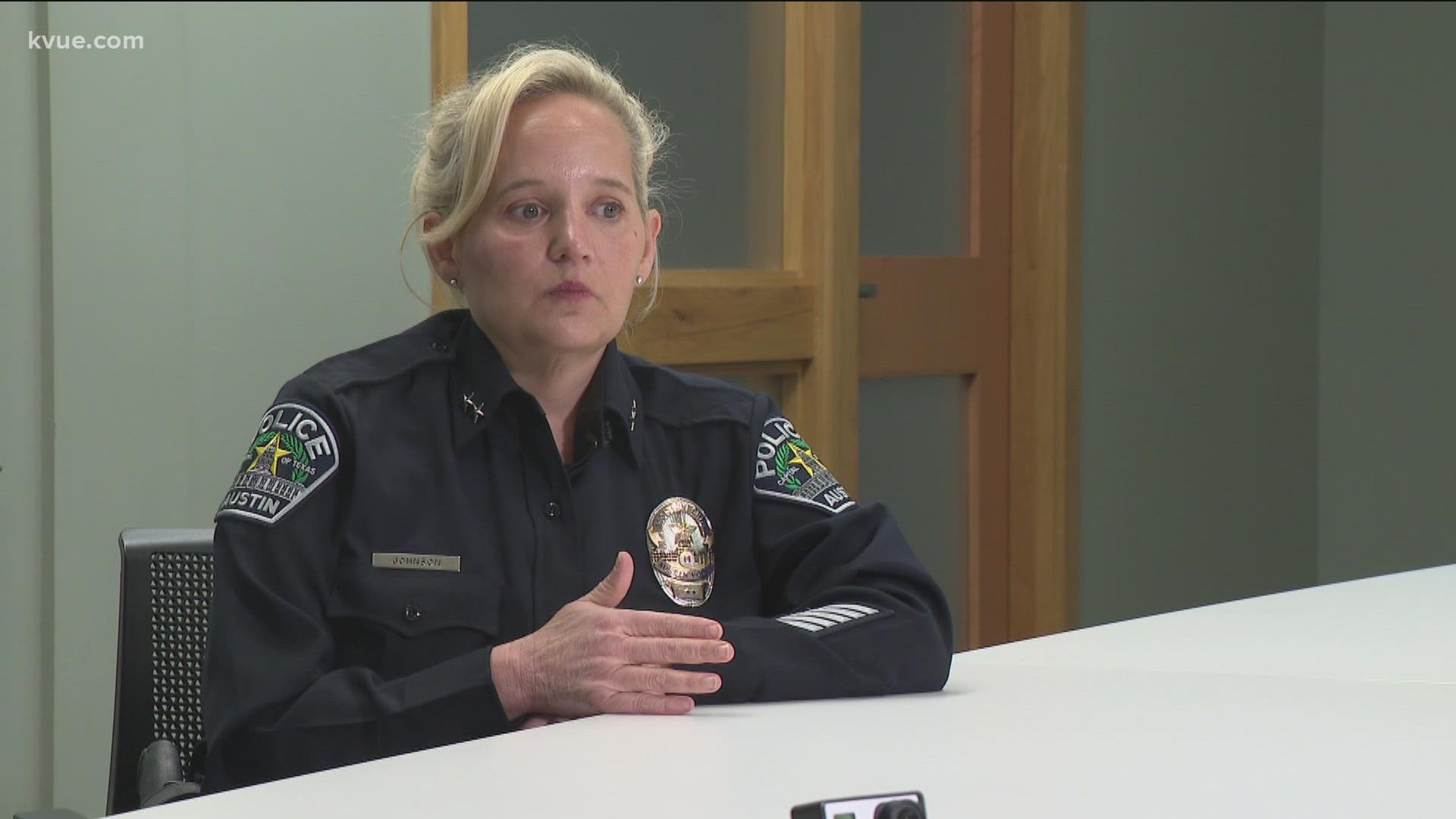AUSTIN, Texas — Do women make better police officers? Research shows that, in some situations, female officers are associated with more positive outcomes than their male counterparts.
This research is part of a nationwide push to increase the representation of women in policing. It's also part of the reason Austin police are making a pledge to recruit more females.
It's called the 30x30 Initiative. The goal is to get APD to 30% female officers by the year 2030.
The KVUE Defenders looked into the project and wanted to see if the research works in real life.
KVUE followed Austin Police Officer Kourtney Smalls-Van Slyke and her partner, Officer Duane Benavides, around as they took calls in South Austin.
Outside the Austin Police Department Ralph Ablanedo South Substation, Officer Smalls-Van Slyke recorded herself.
"This is my 41 check. Taser, Taser," said the officer as she made sure her Taser and other equipment worked.
Austin police officers don't normally partner up, but on this day, she took calls with veteran Officer Benavides.
"Are you 100% OK with having a female as your partner?" we asked.
"Absolutely. 110%," he answered.
Officer Smalls-Van Slyke has been with the APD for three years. She said being a Black female officer has come with challenges.
"'Hey, you're female, you're nothing,' like, 'You shouldn't even be doing this job.' And then as a minority, it's just like, 'Why did you do this?' Like, 'You're a sellout because you're taking,' you know, 'you're taking more Black people to jail,' or, 'You're doing this.' Like, 'You're supposed to support us and not hinder us.' I'm like, 'I'm not here to hinder you. I'm not here to lock you up. I just have to do my job.' Look, I need to make sure that our streets are protected, no matter what that means," said Officer Smalls-Van Slyke.
Still, she loves the job.
During a traffic stop, we overheard Officer Smalls-Van Slyke go beyond traffic violation talk. She counseled the driver on a family matter.
Juan Gamez told us he was surprised and that he wants to see more women on the force.
"Females can do a better job than men sometimes, you know, and maybe a lot of the time," said Gamez.
Officer Smalls-Van Slyke is one of 191 female officers with the APD. That's 191 out of 1,722 total officers as of the end of February. That means female officers make up 10.5% of the department. That's under the national average of 12%.
Catherine Johnson is one of two female assistant police chiefs at APD.
"It's really low. We need more women in the department. We need more women in law enforcement," Assistant Chief Johnson said.
"Women tend to de-escalate more. They tend to communicate a little bit more before they have to take action, and that's something as a department we are moving towards," Assistant Chief Johnson said.
Assistant Chief Johnson is part of the 3% of women in police leadership across the country. That's according to research by the 30x30 Initiative, a nationwide push to get more females into policing.
APD is the latest department to join the project.
Dr. Anne Kringen is the division manager of APD's training academy. She said the first steps of the 30x30 Initiative should help them discover why APD falls below the national average when it comes to hiring females.
As for the advantages of the 30x30 Initiative, Dr. Kringen said there are many.
She should know. The former professor and police officer sits on the national initiative's steering committee.
"Officers of color and female officers are less likely, or have had less use-of-force incidences," Dr. Kringen said.
Research by the 30x30 Initiative also showed female officers:
- are named in fewer complaints and lawsuits
- are perceived by communities as being more honest and compassionate
- make fewer discretionary arrests, especially of non-white residents
- see better outcomes for crime victims, especially in sexual assault cases.
We saw one of those tenets in action when Officers Smalls-Van Slyke and Benavides respond to a check-welfare call.
We stay outside the apartment until Christiana Montoya allowed our camera inside her home. The mother of two told us she called 911 after her baby accidentally drank bathwater and started choking.
"She drank some water, she started choking, she turned blue for a second. I started patting her, blowing in her face – I got scared," Montoya said.
She was also grateful that it was Officer Smalls-Van Slyke who showed up at her door.
"Thank God she was here to help me. She was the first one here at my apartment," Montoya said.
Officer Smalls-Van Slyke attended to Montoya's toddler as EMS treated the baby.
"It's another mother figure to my son, so he won't be as scared," said Montoya.
"That little thing of me just coming in was a moment for her, like it was important," said Officer Smalls-Van Slyke.
It was important for the citizen and important for Officer Smalls-Van Slyke, making a difference for this one family before taking off to the next call.
Dallas PD and Fort Worth PD are a couple of other Texas law enforcement agencies that have already adopted the 30x30 pledge.
PEOPLE ARE ALSO READING:

